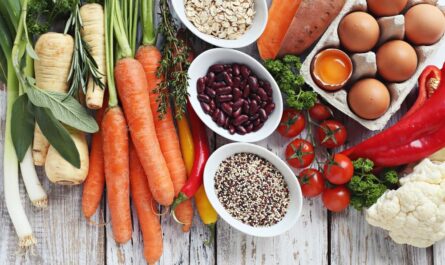The Ultimate Guide to Protein Bars
What are Protein Bars?
Protein bars are snack bars made from ingredients like grains, nuts, seeds, and dried fruit. The main focus of protein bars is to provide protein to support muscle growth and recovery. Protein bars typically provide 10-20 grams of protein per bar. Some common protein sources used in protein bars include whey, casein, soy, pea, and egg proteins. Protein bars aim to provide convenient sources of protein that can be easily consumed on-the-go.
Nutritional Breakdown of Protein Bars
In terms of macros, protein bars provide protein, carbohydrates, fat, and some micronutrients. On average, a protein bar contains:
– Protein: 10-20g per bar. This is usually the main macronutrient focus to support muscle protein synthesis.
– Carbohydrates: 15-30g per bar. Carbs provide energy and comes mostly from ingredients like oats, nuts, dried fruit.
– Fat: 5-10g per bar. Fats help with satiety and come from ingredients like nut butters.
– Fiber: 3-5g per bar. Fiber aids digestion and comes from whole food ingredients.
– Other micronutrients: Varies depending on ingredients but many provide calcium, vitamins, and minerals.
Key Types of Protein Bars
There are a few main types of protein bars depending on the primary protein source and ingredients used:
– Whey protein bars: Often the highest in protein content at 20g+, with whey concentrate or isolate as the primary protein. Taste chalky.
– Casein protein bars: Slower digesting protein from casein helps sustain protein levels for long periods. Creamier texture than whey bars.
– Plant-based protein bars: Made from plant proteins like soy, pea, brown rice or hemp. Lower in protein at 10-15g but more sustainable option.
– Meal replacement bars: Higher in calories at 250-300 to replace a meal. Often include complete branched-chain amino acids.
– Flavor-focused energy bars: Lower in protein at 5-10g but taste better due to more indulgent ingredients like nut butters.
Key Factors to Consider When Buying Protein Bars
When choosing a protein bar, it’s important to consider several factors:
– Protein content and quality: Choose bars with 10g+ protein from high quality sources like whey, soy, pea protein.
– Ingredients list: Look for minimal processed ingredients and more whole food sources of nutrients. Avoid unnecessary/unhealthy additives.
– Macros: Consider carbohydrate, fat, and fiber content depending on your individual macro needs and goals.
– Texture: Some prefer thicker and chewier/denser bars while others opt for thinner, softer types. Personal preference.
– Allergens: Check for any potential allergens like dairy, nuts, gluten that need to be avoided.
– Flavor: Many options covering almost every flavor profile from chocolate to fruit. Find ones you enjoy eating.
– Cost: Consider cost per serving depending on frequency of use from $1-3 per typical protein bar.
Popular Protein Bar Brands
Some topselling and popular protein bar brands include:
– ThinkThin Protein Bars: Variety of flavors, 210 calories with 20g protein. Often only 1-2g sugar.
– ONE Protein Bars: Higher protein options at 240 calories with 21g protein. Clean ingredients, gluten-free.
– Luna Protein Bars: Plant-based options made with real foods, 160 calories with 12-15g protein.
– RXBar Protein Bars: Only few simple Whole Food ingredients, 170 calories with 12g protein. Popular flavors.
– PowerCrunch Protein Bars: 180 calories with 17g protein. Focus on higher protein and lower sugar than competitors.
– Kind Protein Bars: Variety of nut-free flavors, 180 calories with 8g protein. Made with nuts, fruits and oats.
– Quest Protein Bars: Higher calorie at 190 with 21g protein. Strong protein profile loved by bodybuilders.
Best Times to Eat Protein Bars
With their portable nature and protein/carb balance, protein bars are great snacks that can be eaten throughout the day:
– Pre-workout: 30 minutes before a workout to provide sustained energy and protein synthesis during and after exercise.
– Post-workout: Within 30 minutes of finishing a workout to replenish glycogen and refuel muscles with fast-digesting protein.
– Between meals: As a convenient snack or mini-meal when a larger meal isn’t available to prevent hunger and keep protein levels up.
– On-the-go: Protein bars travel well for busy lifestyles, whether commuting or traveling, when access to whole foods is limited.
In conclusion, protein bars provide a versatile snack option to support active lifestyles when whole food is not convenient or accessible. Choosing high-quality protein bar products tailored to individual macro and allergen preferences can help optimize their benefits. Protein bars shine best as nutritious, portable fuel when consumed strategically around physical activity.




